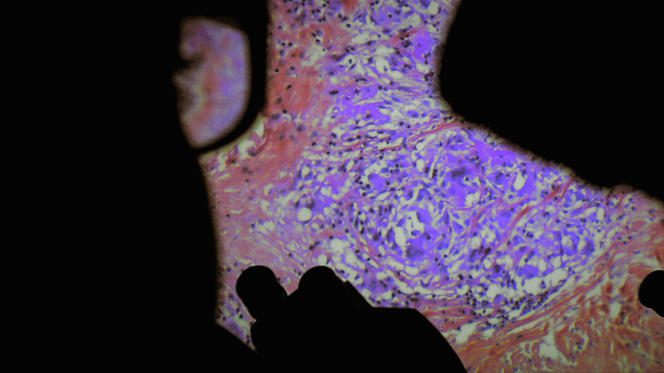THE OPINION OF THE “WORLD” – WHY NOT
After a few decades of practice, anyone practicing a profession thinks, at the very least, that they have mastered the basics. This naturally applies to the film critic, who, notwithstanding his consideration for the new aesthetic challenge represented by each film to be discovered, considers that he knows the grammar of structures and sensations by heart. Big mistake. De humani corporis fabrica leads to this admission: for the first time in a career that is beginning to last, we are writing the review of a film during which we will have closed our eyes for about half of its duration. Not a film that we have not seen, as Jean-Patrick Manchette recommended, not a film that we would have mentally absented ourselves from given its interest, but a film that we will have wanted to see from start to finish. and who will nevertheless, by his unbearable violence, constantly defy this will.
We owe this experience to a film couple, Verena Paravel and Lucien Castaing-Taylor. The first, 51, is a Swiss anthropologist, artist and filmmaker. The second is a British anthropologist, photographer and filmmaker. They work together in the sensory ethnology laboratory at Harvard (Massachusetts), a discipline which postulates that the universe of the body and sensations is also governed by the culture to which one belongs. In the cinema, the couple became known with Leviathan in 2012: twelve cameras placed at different points on a fishing trawler in the North Atlantic, for an epic rendering, transcending a rough but ordinary activity into a Melvilian fresco or a biblical imprecation. Then by Caniba (2017), in-depth interview with Issei Sagawa, a Japanese student at the Sorbonne who, in 1981, killed and then devoured one of his Dutch classmates for three days.
Borrowed from the title of the book by André Vésale, a great figure in the history of medical anatomy, De humani corporis fabrica (“the structure of the human body”) is presented as the montage of a series of shots largely borrowed from the very instruments of the surgeons during their intervention in the depths of their patients, others recording gestures of opening or dissection filmed from the outside. To the sound, snippets of muffled dialogue from the teams in action, as perceived from the very interior of the bodies of the sleeping patients, or the general rumor, streaked with cries and complaints, of the hospital. Produced with the help of a number of Public Assistance hospitals in the north of Paris, the film brings us views of different departments, including oncology, orthopedics, gynecology, obstetrics, pathology, the morgue.
You have 43.21% of this article left to read. The following is for subscribers only.
